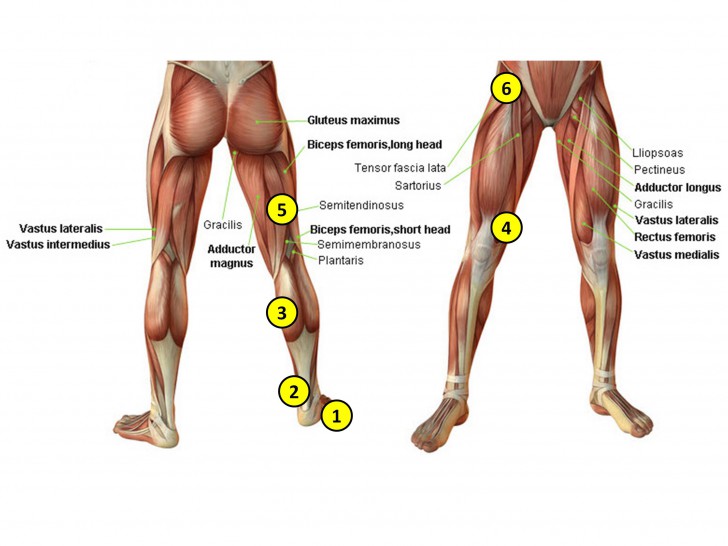The nervous system is like the messenger system for the human body. It carries electrical signals from the brain to various other parts and then back again, sending and receiving instructions, impulses, and sensory input. These electrical signals tell the body what to do, and the nerves in the human leg give it signals telling it to move forward or backward, to support the body, bend at the knees, and so on.
The brain and spinal column of the body control the majority of impulses and signals in the human leg, but this limb also contains what are called reflex pathways, and these receive signals from the tendons, joints, ligaments, and the muscles in the leg. These reflexes aid in the proper response from the legs so that they can maintain balance, movement, and even muscle tone. They also aid in responsiveness, such as when you stub your toe and immediately pull your foot away or otherwise react to painful stimuli.
From the area of the lower back and pelvis and in the area of the thighs, the nerves in the legs begin to form two networks known as the sacral plexus, which begins to be formed in the pelvic region, and the lumbar plexus; this forms in the lower back.
The lumbar plexus then extends into four separate nerves, called the lateral femoral cutaneous nerve, the femoral nerve, the saphenous nerve, and the obturator nerve. These are large, major nerves but they too then divide into branches of nerves that reach the individual muscles of the legs. These smaller nerves then work to stimulate muscles for sensation such as for hot and cold, pain, and even for touch.
The femoral nerve branches out to serve the quadriceps muscles and the inner and outer thigh, while the saphenous nerve goes to the skin of the outer leg and foot area. In the area of the groin, the obturator nerve connects the muscles to the skin, and the cutaneous nerve serves to attach the skin to the posterior and inner regions of the thigh.
The sciatic nerve is one of the largest and longest in the body and it descends from the buttocks and thighs, conducting those electrical signals and impulses to the areas of the hip joints, the inner and outer thighs, the feet, and most of the lower legs. The sciatic nerve also serves the skin below the knee. As it branches through the leg is breaks into what is called the tibial and fibular nerves, and these too then branch off into even smaller nerve areas that cover the legs and feet.
The word plantar refers to the foot, and the nerves that branch into this area are called plantar nerves. These originate from the tibial and fibular nerves and reach through the feet and toes. These work to control and command the muscles of the feet and toes, which move the body and help to keep the body balanced and avoid falling forward.
